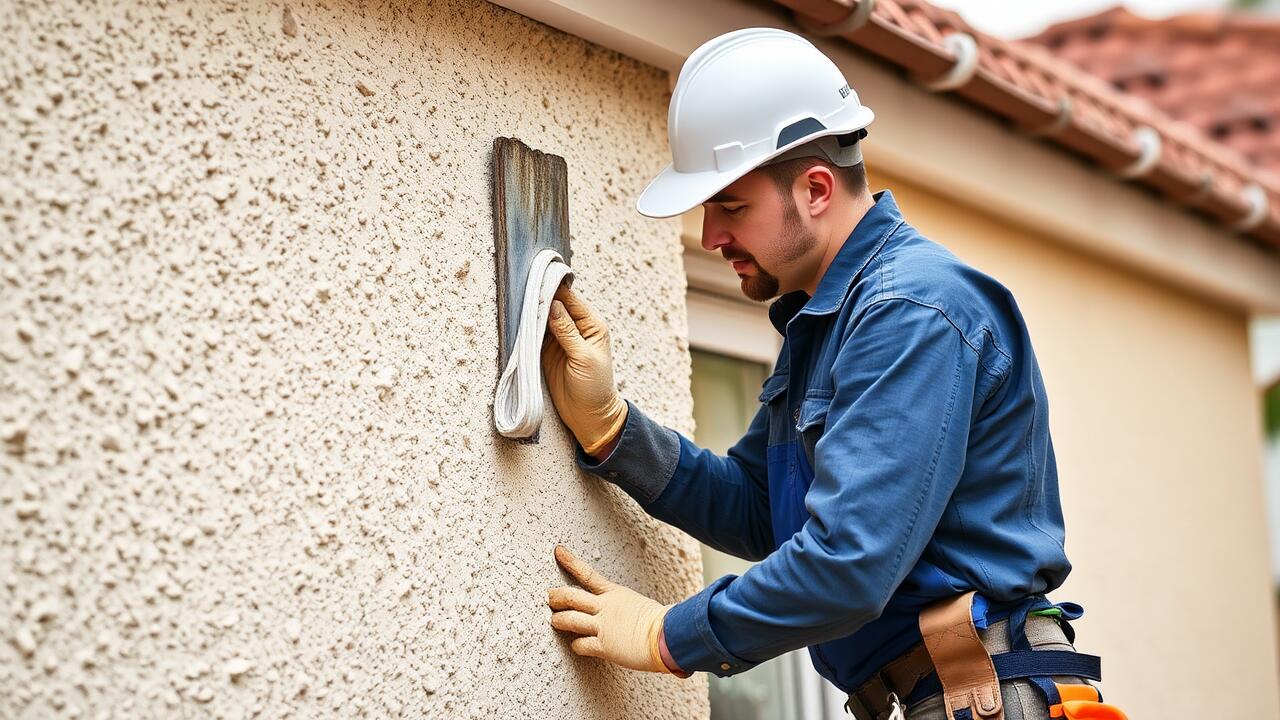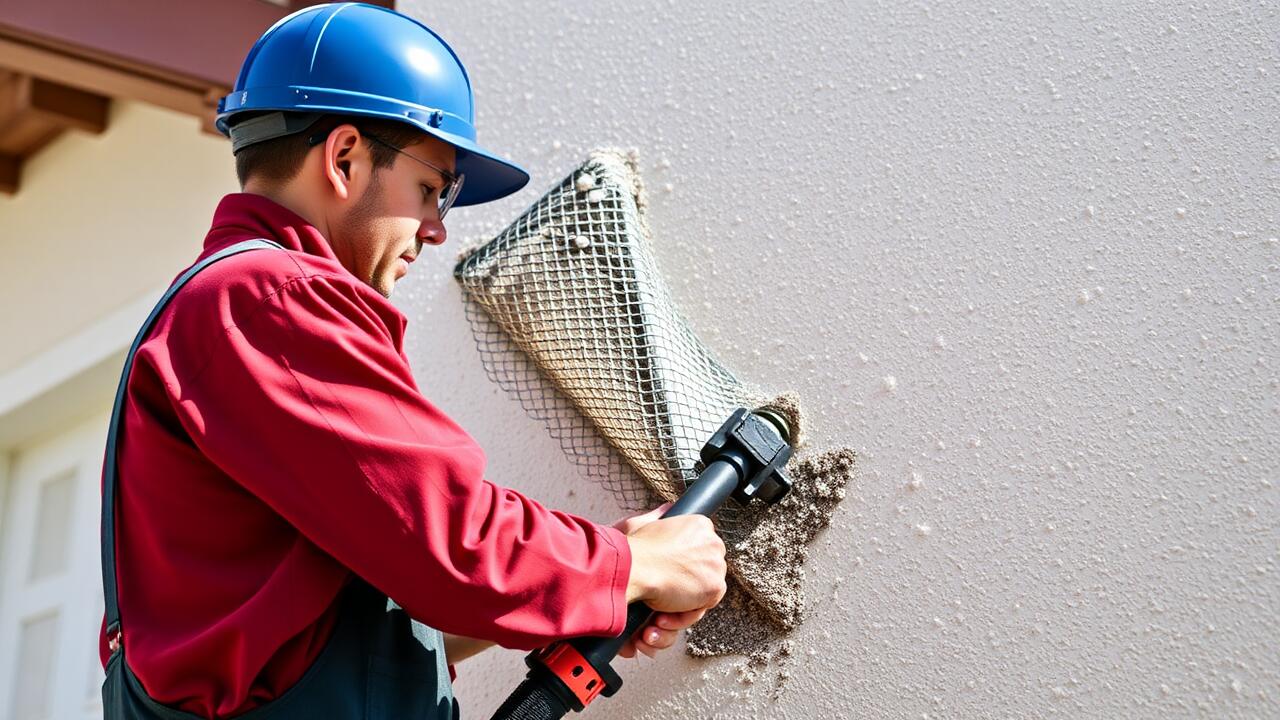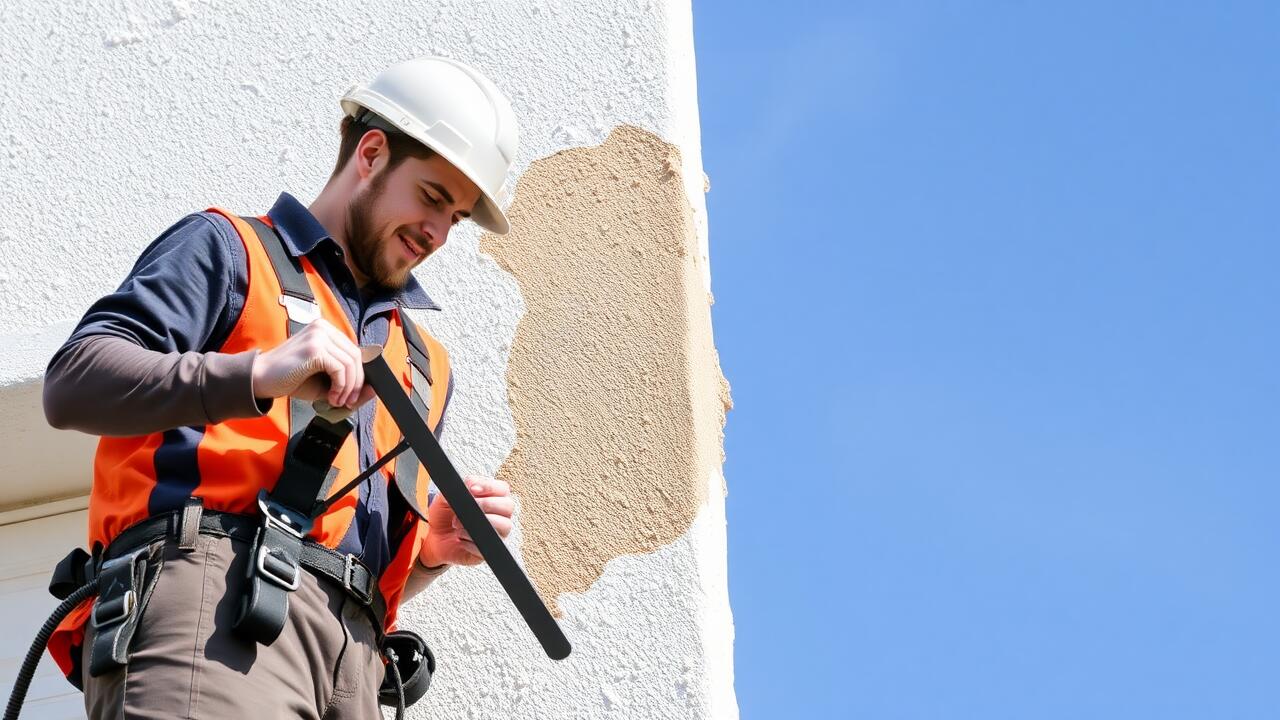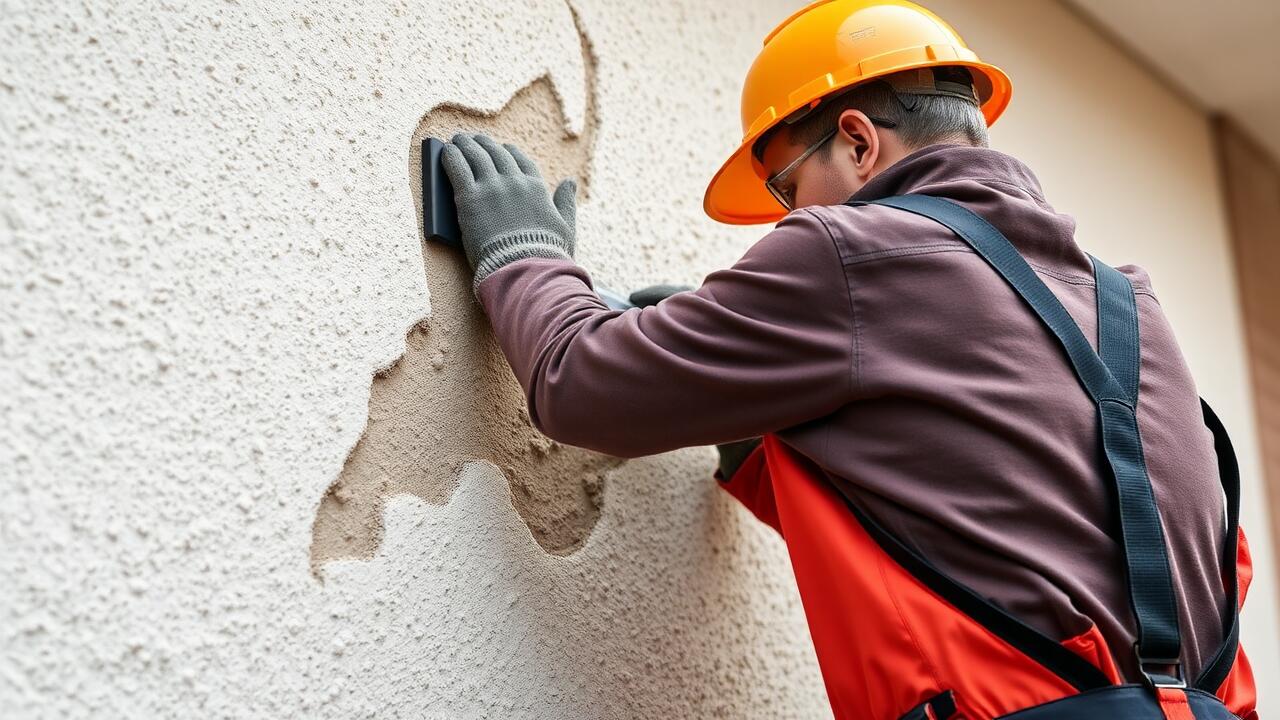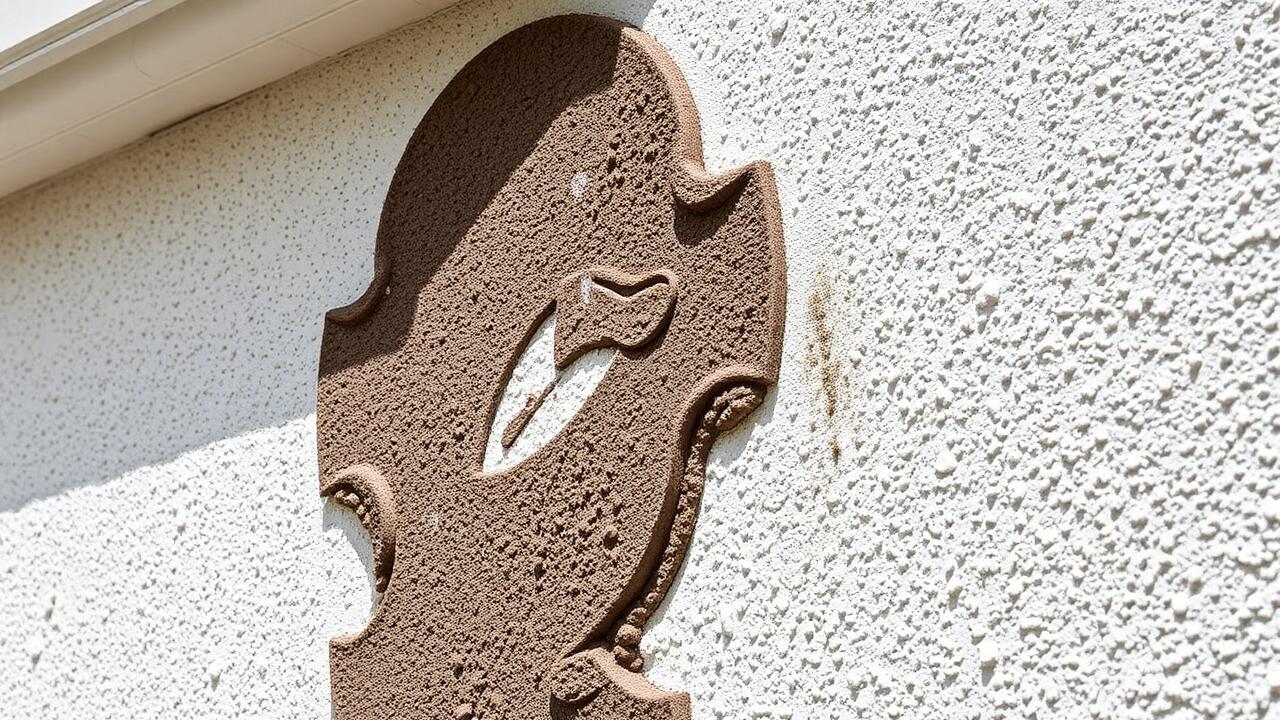
Recognizing Signs of Pockmarks
Pockmarks in stucco can often be identified through specific visual indicators. Look for small, shallow depressions on the surface that disrupt its otherwise smooth appearance. These imperfections might vary in size and can appear sporadically across the exterior. Changes in texture can also suggest underlying issues, as can areas where the stucco seems uneven or flaking. Homeowners should frequently inspect their stucco to catch these signs early, which can help prevent further deterioration.
Addressing pockmarks promptly is essential to maintain the overall integrity of the stucco. If the damage is noticeable, it might be time to search for "Stucco Repair near me" to enlist professional help. Ignoring these signs can lead to more extensive repair needs and potentially higher costs. Regular maintenance, including cleaning and sealing, can help prevent moisture ingress that contributes to pockmark formation.
Visual Indicators of Damage
When assessing stucco for signs of damage, pockmarks and pitting are among the most telling visual indicators. These imperfections usually manifest as small depressions or craters on the surface, often resulting from moisture infiltration or material degradation. Over time, these blemishes not only affect the aesthetic appeal of the stucco but also signal potential structural issues if left unaddressed. Homeowners should routinely inspect their stucco walls, especially in areas exposed to harsh weather conditions.
In addition to pockmarks and pitting, discoloration may also serve as a warning sign of underlying problems. Faded spots or uneven coloring can indicate moisture problems or fading due to UV exposure. Such changes should prompt a closer examination, especially if the integrity of the surface seems compromised. If these issues become apparent, seeking assistance with "Stucco Repair near me" can provide timely intervention to prevent further deterioration.
Preventative Measures for Stucco Integrity
Regular maintenance is crucial for preserving the integrity of stucco surfaces. Routine inspections help identify early signs of wear and damage, allowing homeowners to address issues before they escalate. Keeping the surfaces clean is another important measure. Dirt and debris can trap moisture against stucco, leading to deterioration over time. Pressure washing or gentle cleaning methods can effectively remove build-up without harming the finish.
Applying a protective sealant further extends the life of the stucco. These sealants create a barrier against moisture infiltration and reduce the risk of mold or mildew growth. Additionally, ensuring proper drainage around the foundation helps prevent water from pooling, which can also contribute to damage. Homeowners looking for guidance or needing immediate assistance may search for "Stucco Repair near me" to find professionals who specialize in maintaining and repairing stucco surfaces effectively.
Best Practices for Maintenance
Regular maintenance of stucco is essential for prolonging its life and appearance. Inspecting the surface for signs of wear or damage can help identify potential issues before they escalate. This includes checking for cracks, discoloration, or areas of pitting. Addressing these problems early on prevents moisture infiltration and related complications, which can be costly to remedy. Keeping the surface clean by washing it periodically also aids in maintaining its integrity.
For homeowners unsure about how to approach maintenance, seeking professional assistance is advisable. Searching online for "Stucco Repair near me" can connect you with local experts who provide thorough inspections and evaluation. Establishing a routine care plan with professionals ensures that your stucco remains in optimal condition over the years. Additionally, staying informed about regional weather patterns can help in anticipating and addressing potential vulnerabilities in stucco installations.
Repairing Pitting and Pockmarks
To effectively address pitting and pockmarks in stucco, a thorough assessment of the affected areas is essential. Begin by cleaning the surface to remove dust, debris, and any loose material. This ensures that the repair materials adhere properly. For minor pitting, a patching compound can be applied using a putty knife to fill in the damaged areas. If the damage is more extensive, areas may need to be chipped away, with fresh stucco mixed and applied to restore the structure.
Once the repair material is in place and smoothed out to match the surrounding stucco, it’s crucial to allow adequate drying time as specified by the product instructions. After drying, a coat of paint or finish may be necessary to integrate the repair with the existing surface. Homeowners looking for professional help might consider searching for "Stucco Repair near me" to find local experts who can assist with more extensive repairs or ensure that the work is completed to a high standard.
Step-by-Step Repair Process
Begin by assessing the extent of the damage to the stucco surface. Clean the affected areas thoroughly using a pressure washer or a scrub brush to remove dust, dirt, and loose material. Allow the surface to dry completely before proceeding. For pockmarks or pits that are smaller than a quarter, mix a patching compound according to the manufacturer’s instructions. Apply the compound into the damaged areas using a putty knife, smoothing it out to match the surrounding texture.
For larger areas of damage, consider using a stucco repair kit that includes a bonding agent and a topping mix. Outline the repair area with painter’s tape to create clean edges. After mixing the topping mix, apply it over the patched areas with a trowel, blending it seamlessly into the existing stucco. Once the repair has cured, simulate the texture of the original stucco if needed. Searching for "Stucco Repair near me" can provide professional services when necessary, ensuring a high-quality finish and lasting durability.
FAQS
What are pitting and pockmarks in stucco?
Pitting and pockmarks are small indentations or shallow holes that appear on the surface of stucco due to various factors such as moisture intrusion, improper installation, or freeze-thaw cycles.
How can I identify pockmarks on my stucco?
Signs of pockmarks include visible indentations or rough patches on the stucco surface, which may also be accompanied by flaking, discoloration, or water damage.
What causes pitting and pockmarks in stucco?
Common causes include water infiltration, inadequate drainage, poor application techniques, and weather-related factors such as freezing temperatures or excessive heat.
What can I do to prevent pitting and pockmarks in my stucco?
Regular maintenance, ensuring proper drainage, using quality materials, and applying sealants can help maintain stucco integrity and prevent damage over time.
How do I repair pitting and pockmarks in stucco?
Repairing involves cleaning the affected area, applying a suitable patching compound, and matching the texture of the surrounding stucco. Following a step-by-step repair process can ensure effective restoration.
